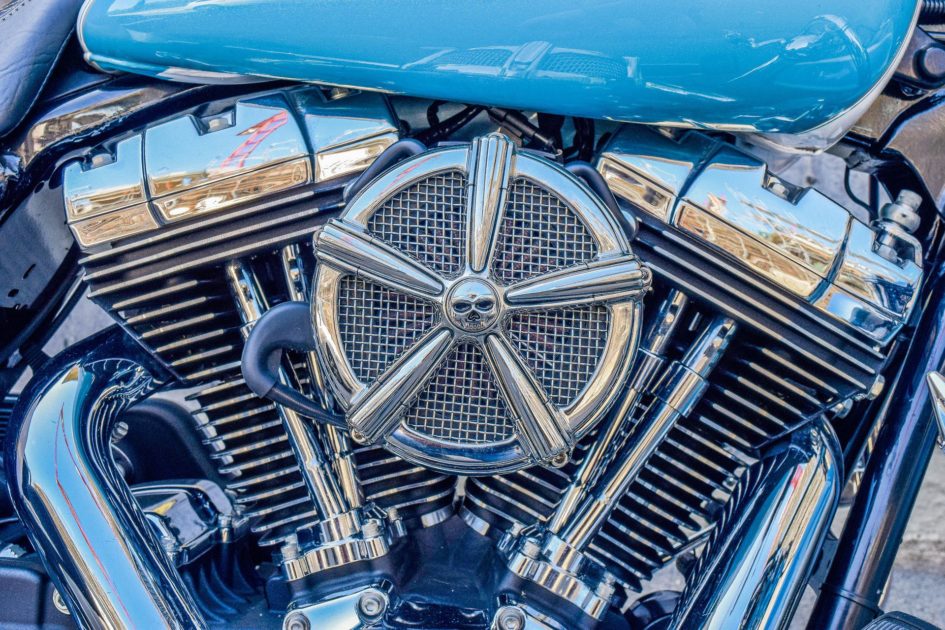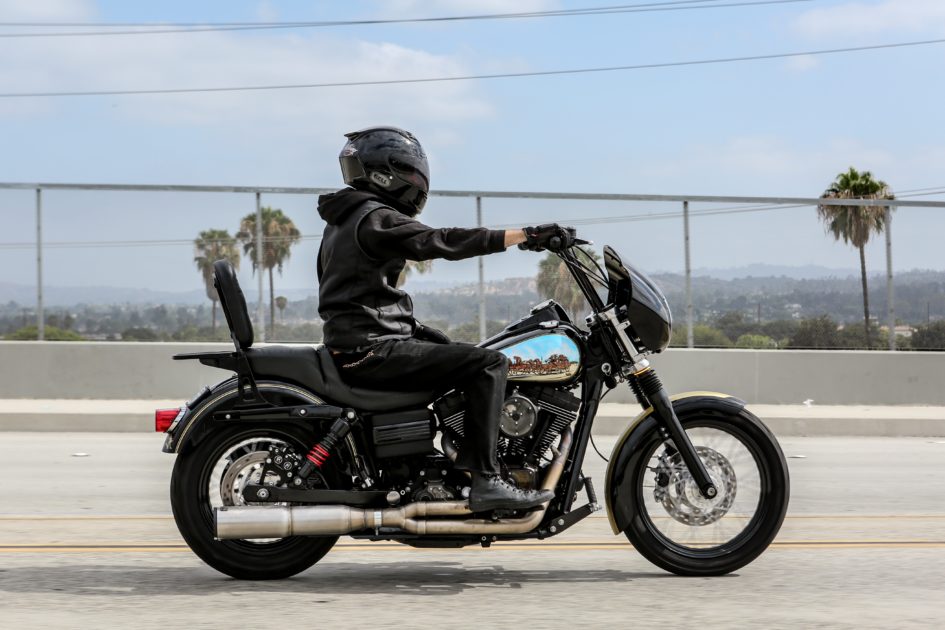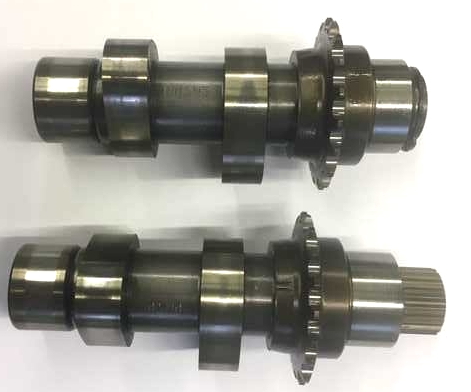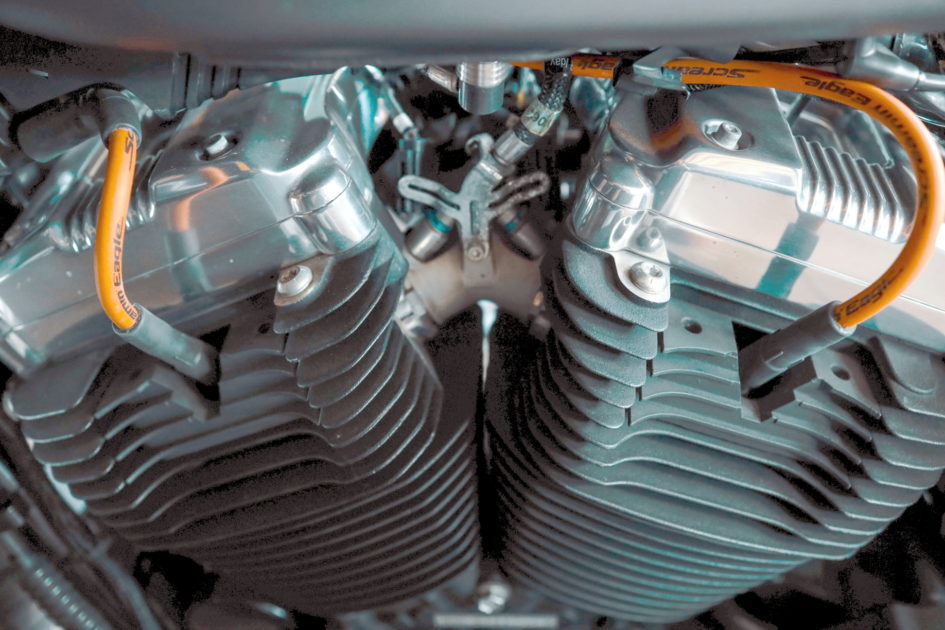There’s no doubt about it – the Twin Cam 88 is a great engine, but even the best engines can be improved with the right upgrades.
Whether you’re looking to make huge HP and TQ or if you’re simply looking to spice up your Twin Cam 88 a bit – we’ve got it all in this article.
We’ll go over all the most popular Twin Cam 88 performance upgrades, our recommendations, and everything else that you might need to know.
So hold on tight – we’re gonna make your Twin Cam 88 pull like a rocket!
The 6 Best Twin Cam 88 Performance Upgrades
Harley Davidson motorcycles are all about customization and in order to make it easier for riders to pick and choose performance mods, Harley Davidson decided to group them into stages, which you might have seen before.
Most riders are content with the Stage 1, and maybe Stage 2 upgrades, and they really do make a huge difference. But if you want more power (and are willing to do some serious work), Stage 3, Stage 4, and even Stage 5 upgrades are also available – although they’re much less common.
Stage 1: Intake & Exhaust
The Stage 1 performance upgrade is all about airflow – cramming more air into the Twin Cam 88 and moving exhaust gases out quicker.
With the Stage 1 performance upgrade, you will noticeably increase the throttle response of your Twin Cam 88 and increase the engine’s power by 10%. Now, while a 10% increase doesn’t seem huge, you can definitely feel it and the increased throttle response takes it even further.
The Stage 1 is a combo of a high-flow performance air cleaner and a performance exhaust.
The stock air cleaner on the Twin Cam 88 is not ideal. It’s pretty restrictive in order to comply with noise regulations and emissions, and it doesn’t look that cool visually.

Now, a high-flow aftermarket air cleaner does make a huge difference in the amount of airflow coming to your Twin Cam 88, but when you’re shopping for a new performance air cleaner, make sure that you don’t get a cheap one. They don’t flow all that well and they will almost certainly break from the vibration and you’ll end up buying an air cleaner twice.
We recommend going with known brands like Vance & Hines, K&N, or Arlen Ness.
Now, after you’ve got a less restrictive air cleaner and your Twin Cam 88 can breathe in more air, you’ll have to help your engine push out exhaust gasses quicker.
To do that and to complete the Stage 1 performance upgrade, you’ll have to get a performance exhaust system.

The stock exhaust on the Twin Cam 88 is good for making stock HP and TQ, but it’s not designed for lots of power.
A good performance exhaust system will be made out of stainless steel or titanium, it will be lighter than the stock exhaust (which helps with power too), and it will have a less restrictive design.
It’s important to note that you might not want an exhaust that’s too loud – not only will it give you a headache on long trips, but you might get hassled by the cops. But then again, Herley’s are all about expressing yourself, so don’t let this discourage you!
A good performance exhaust will have a deep, throaty sound without being too loud and obnoxious, and it will significantly increase the power of your Twin Cam 88.
There are tons of great performance exhausts on the market, but we also recommend you to stick with known brands in order to avoid disappointment.
Stage 2: Performance Cams
Now that your Twin Cam 88 is able to breathe better, it’s time to really take advantage of that extra airflow, and we do that by getting more aggressive cams.
The camshafts are responsible for opening and closing the valves at the right time, and they play a big role in how much power an engine can make and where in the RPM range that power is going to be.
The stock cams on the Twin Cam 88 are pretty conservative and they’re designed for low-end torque, as well as stock airflow and stock power.

However, with the Stage 2 performance upgrade, we’re going to be installing more aggressive cams that will help us make more power and increase the rev limit.
How much more power? Well, you can expect to make around 20-30% more horsepower and 20% more torque – depending on the cam, of course.
Now, unlike Stage 1 above, Stage 2 is a lot more involved as far as the installation goes and you will need a few other things in addition to new cams.
You will need to get new gaskets, you might need to get new valve springs if the cam is not a “bolt-in”, and you will definitely need to get new adjustable pushrods.
Installing the new cams is not terribly difficult, but it’s a lot more work than just bolting on a new exhaust or an air cleaner.
If you’re not comfortable doing the work yourself, we recommend taking it to a professional.
How To Choose The Best Twin Cam 88 Camshaft for YOU
One of the most annoying things about getting a new camshaft is having to read and understand all the specifications. Camshafts are really complicated and it can take you a while to understand how they work and which type of cam is best for you.
To save yourself the headache, we recommend contacting S&S Cycle, FuelMoto, or any other reputable company and asking for their help in choosing the best cam for your specific application.
They will ask you about your bike, what type of riding you do, what type of power you’re looking for, and they will be more than happy to help you choose the perfect cam. That way, you’ll save yourself a lot of time, which could be better spent by riding.
Now, as for choosing a cam by yourself, we highly recommend the Harley Camshaft 101 video series by S&S Cycle. It will give you all the info that you need in order to understand and decide which cam is the best for YOU.
Stage 2.5: Carb Rejet and Tune
Okay, this isn’t really an “official” stage, but it has to be done after a camshaft change.
It doesn’t matter whether your Twin Cam 88 is carbureted or uses a fuel injection system – you must adjust the fuel output in order to compensate for the increased airflow.
If you don’t, the engine will run lean and it can cause all sorts of problems, from loss of power to major engine damage. At the very least, you’ll be disappointed by the performance of the bike if you do not tune it.
So, how do you adjust the fuel output?
Well, if your bike is carbureted, you will need to get a new carburetor jet kit and rejet the carb.
If your bike is fuel injected, you will need to have it dyno-tuned or buy a tuner. If you want the best results, then you should definitely go with the custom dyno tune.
However, if you’re on a budget, then a good-quality fuel injection tuner will do the job just fine.
Stage 3: Big Bore Kit
Now we’re getting serious.
A big bore kit is definitely the best Twin Cam 88 performance upgrade you can do and it’s a very popular choice.

There’s no replacement for displacement when it comes to making power on a Twin Cam 88 and with a big bore kit, you can increase the displacement of your engine from 88 cubic inches all the way up to 98 or even 100.
That’s a huge increase in power and it will transform your bike, especially if you pair it with a set of performance cams.
Of course, with such a big increase in displacement comes a lot of work.
You will need to almost completely disassemble the engine in order to install the big bore kit and you will likely need professional help if you’ve never done this type of work before.
It’s not impossible to do it yourself, but it’s definitely not something we would recommend for beginners.
Which Displacement Big Bore Kit Should You Get?
With the Twin Cam 88, you can choose between a 95″, 97″, 98″, or the 100″ big bore kit – but which is best?
Well, it all depends on what you’re looking for and how much money you’re willing to spend.
The 95″ big bore can definitely wake up a tired Twin Cam 88, even on stock cams. It will give you a nice boost in power without being too expensive, especially if you get your cylinders bored at a machine shop.
If you’re looking for even more power, then the 98″ big bore is the way to go. It can be paired with stock cams and heads, but you would get the most out of it if you raise the compression up a bit and get the proper cams to handle it.
Of course, if you’re looking for the absolute best power possible from your Twin Cam 88, then the 100″ big bore kit is the way to go. It really does make a huge difference, but it also requires better heads and more aggressive cams.
Now, most people go with the 98″ big bore kit, because it makes the most sense financially, and the difference between it and the 100″ is not that significant. The 98″ provides a good base to move up from, even with stock compression.
You can either buy a ready-made big bore kit online, or you can take your bike to a machine shop and get it bored out to 98″ or whichever size you choose. Boring the cylinders at a machine shop is usually cheaper and the machinist will be able to get the pistons true to size, which is important.
As for potential power gains, a big bore kit should add 30% to 50% more power to your Twin Cam 88 depending on displacement size.
Stage 4: Headwork & High Compression Pistons
The next best thing you can do for your Twin Cam 88 is to get some headwork done and install high-compression pistons. Increasing the compression will let you take full advantage of more aggressive cams and the big bore kit, but it does make things a lot more complicated.
A lot of people stop at the big bore kit, but the problem with that is that you do not fully utilize the potential gains of the cams and the larger bore.
You can further increase the airflow to the Twin Cam 88 by getting your heads ported, but increasing the compression ratio would make the biggest difference. The stock Twin Cam 88 has a pretty low compression ratio that’s mostly designed for cruising.
By bumping up the compression to 10.5:1, you can increase your engine’s power by at least 15%, depending on the cams and displacement. Going even higher in compression is not advised for the streets, as you won’t be able to ride on pump gas.
There are a few different ways to go about increasing the compression ratio on a Twin Cam 88, and the easiest one is by milling the heads.
You can also use high-compression pistons, which is the second most common way to do it.
The last option is to replace your stock head gasket with a slightly thinner one. This will give your engine a slight bump in compression ratio, and it’s much cheaper than any other method.
Whichever way you do it, make sure that the valves won’t smash into the pistons, otherwise, you will have a very bad day.
Stage 5: Larger Throttle Body & Injectors
This stage is mostly used by racers, but it can be done and used in the streets.
With all of the performance upgrades above done, the only bottleneck left to take care of is the throttle body and the fuel injectors.
The stock throttle body on the Twin Cam 88 is 44mm, which is pretty small. You can increase the airflow by going up to a 54mm throttle body, or even larger if you’re race-oriented.
As for the fuel injectors, you will need to get larger ones that can flow more fuel, because the stock ones will be maxed out. If the stock ones are at 80% to 90% duty cycle, then you should go up by one size.
Of course, all of those upgrades need to be dyno tuned.
Do You Need All These Upgrades?
No, you don’t need all of those upgrades to make your Twin Cam 88 faster. You can start with a performance air cleaner, exhaust, and cams and get a lot more power out of your engine without breaking the bank.
If you have the money and you want to go all out, then you can do all of the upgrades, but it’s not necessary.
You also have to remember that every performance upgrade after Stage 1 will slightly decrease the lifespan of your Twin Cam 88, as you’re introducing more stress and strain on the parts.
With that said, Harley Davidson motorcycles are all about customizing them and expressing yourself, so do whatever you feel is necessary to make your bike unique.
Final Thoughts
There you have it, the best Twin Cam 88 performance upgrades that you can do to make your bike faster.
Just remember to take things slow and steady, and don’t bite off more than you can chew.
If you’re not sure about something, remember that you can always consult your mechanic or contact the manufacturer of your performance parts.
Ride safe!
Jake is the site’s primary contributor.
Motorcycles and automotive repair have been a big part of his family for generations, therefore it’s only natural that he decided to become a heavy-duty diesel tech.
Outside of work, you’ll find Jake restoring and riding rare street bikes and ATVs.
Thank you for all your hard work in doing this research Gonna try and do it to my ‘99 ultra I’ll see you in the funny papers for you advice on products
thx jerry
I have a 2005 Dyne Low Rider FXDLI.I HAVE INSTALLED An S&S100CI Big Bore Kit, Feuling 543 Cams and Hacker Custom 2 into 1 exhaust. It also has the Excellator intake manifold and has been tuned. I want more power, the cams seem mild, yet are great on the highway.. I want more off the line, and a heavier idle. Thanks for your input. Mileage is not an issue.
Thanks,
Steve
Took a 2003 softail fxsti up to stage 4. Bore the cyl to 98. CC and ported, milled the head. Went with Andrews 37 cams. CP pistons FT 9.5 to 1. Still weighing out HPI manifold + upgrading the injectors. Also put a Baker 6 speed. I have to say the bike “PULLS” on the highway in 6th gear. Very happy with the build
took a TC88 2005 to stage 2. Hi flow air cleaner Re jetted, big radius exhaust, S&S 509gear drive cams, Hayden primary chain tensioned, Oil bud cooler, crank case ventilated & clutch reduction pull kit. increased power from off idle up. Very nice dependable bike now. Very Satisfied. Considering the 95 Bore kit but not wanting to change cams again. (May not be worth the performance cost) & I dont want to get caught up with $ & chasing horsepower numbers riding a springer. Besides , In the real world 90% driving is under 3000 rpms… Not red line racing like the Youtube video hype.